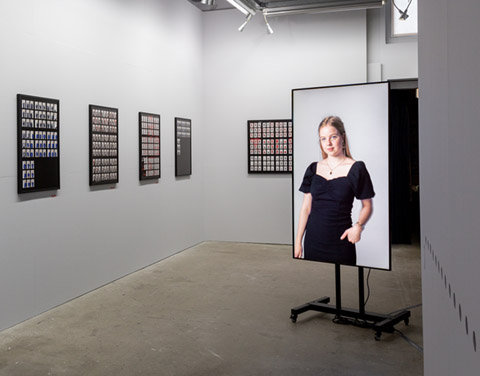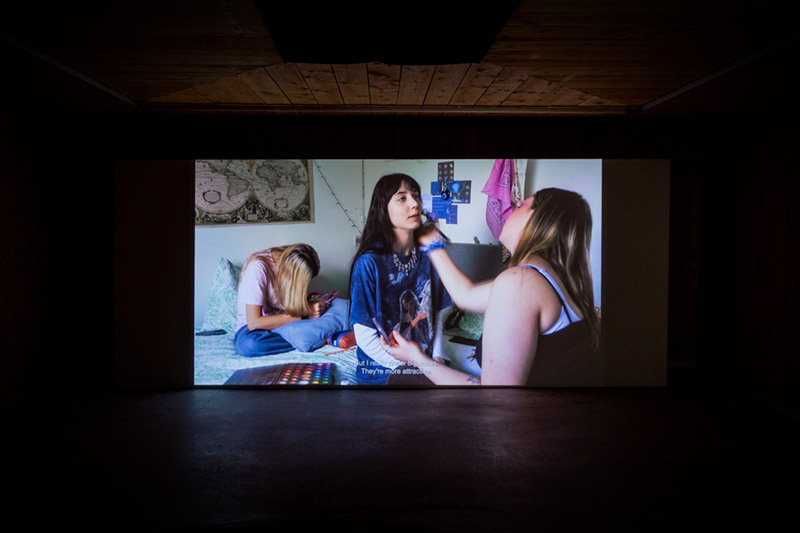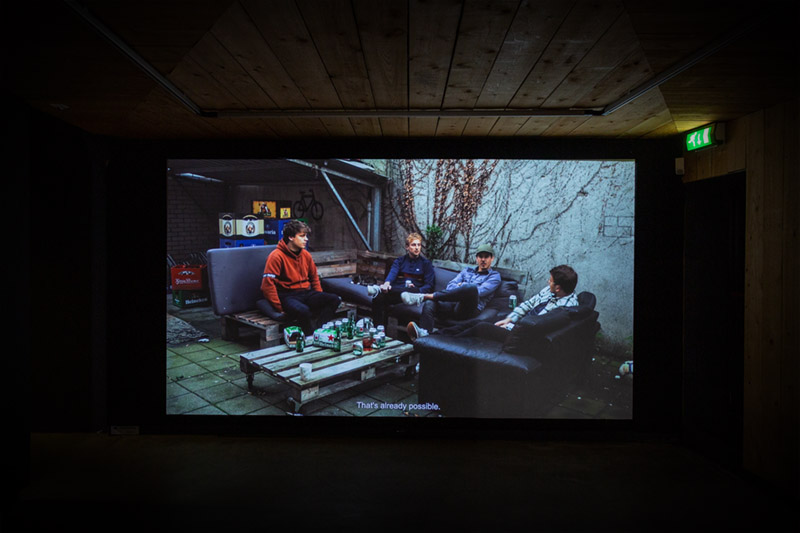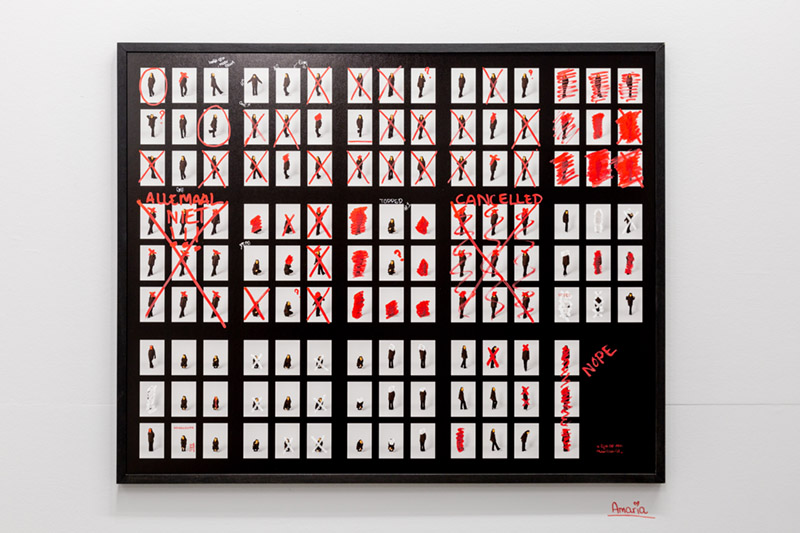
Photographer depicts UG research
Generation Z in selfies
On the wall hangs a frame full of photos of a young man in various poses, some of them a little ludicrous. In one, he stares out into nothing, deep in thought, in another, he’s cheering with his hands up in the air, and in a third, he’s got his hands behind his back as he looks into the camera.
The photos are captioned: ‘I’m no longer playing football!’ says one. ‘Too formal!’ says another.
Economics student Caspar van Rooijen was startled when he saw the photos and read the captions. ‘I thought the comments were really mean’, he says. ‘Then again, I wrote them myself.’
Caspar is one of the subjects of the photo and video project Performing Adulthood, currently on exhibition at photography platform Noorderlicht. It’s part of the Imagining Science series, in which a photographer depicts a field of science from the UG every year.

Growing up
For this year’s edition, photographer Robin Alysha Clemens focused on Generation Z and the theme of ‘growing up’. ‘I’ve always been interested in identity and groups’, she says. ‘It’s a recurring theme in my work.’ Her interest led her to the question whether a generation can be considered a group. ‘What does someone who lives in the Bijlmer in Amsterdam have in common with someone living in a small village in Groningen?’
What does someone from the Bijlmer have in common with someone living in a village?
She turned to sociologist René Veenstra, whose research focuses on young people and how they influence each other through their behaviour. He’s been trying to uncover and understand their social networks. ‘I’m interested in how much young people are focused on who they are’, says Veenstra. ‘This exposition isn’t a direct visual representation of my research, but it does show how you can portray young people.’
Clemens, Veenstra, and his colleagues brainstormed about what growing up truly entails. ‘Scientists have a very objective view of what it means’, she says. ‘Whereas to me, it feels entirely subjective.’

Five pillars
Veenstra and his colleagues told her about the ‘five pillars of growing up’. Based on social ties, civic responsibilities, starting work, finding a partner, and running a household, the researchers determine to which extent some is an adult.
Clemens couldn’t identify with any of it. ‘I’m thirty years old, so not much older than the people in my photographs’, she says. Í still don’t really feel like an adult, however you’re supposed to define it.’
I think the differences between generations are much smaller than people think
Clemens decided to portray the personal side of the story. She invited around twenty young people to take pictures of themselves in a studio. They were given a remote to take the pictures with. ‘I gave them control over their own self-image.’
She printed the photos in her studio and allowed the young people to write comments on them. Clemens also filmed conversations between small groups of young people talking about topics such as social media, the future, and friendship.
Personal angle
Veenstra is happy that Clemens went for this personal angle rather than follow the researchers in their work. ‘She did a great job of capturing how we live in a society in which we’re all too aware that we’re always at risk of being filmed or photographed’, he says. ‘She could have joined us in collecting data, but what she’s done is a much more interesting way of photographing, I feel.’
For Veenstra, it’s common to work with data of thousands of young people, while Clemens focuses on just a few dozen. Nevertheless, Veenstra thinks this will make his research come alive. ‘It’s great food for thought and presents a clear picture of modern times.’
Clemens mainly hopes that people recognise themselves by taking a look at other people’s lives. ‘Everyone was young once, or still is. I think the differences between generations are much smaller than people think.’
Camera shy
Caspar sums up the experience in a single word: ‘Uncomfortable!’ Not only are there pictures of him, but his entire photography session was filmed. He’s never been more ashamed, he says. ‘I wasn’t sure what to do with myself, so I look really stupid.’
His mother loved it, but he wanted to leave as quickly as possible. ‘I think it’s because I’m really camera shy.’
I wasn’t sure what to do with myself, so I look really stupid
Under normal circumstances, he’s not a fan of being photographed. ‘I don’t really like standing out much’, he says. ‘But this was during a time when I was trying to do things that were out of my comfort zone.’
That’s exactly what Clemens is trying to show in her exposition. What kind of identity do young people have, and how do they see themselves? ‘I loved seeing the diversity’, she says. ‘Some young people were already pretty focused on their self-image, but others wanted to participate precisely because they were insecure or they thought it was scary.’
In the end, Caspar is glad that he participated in the project. He thinks it’s a good snapshot of what he was like back then. At the same time, he also realises how much he’s changed over the past six months. ‘I’m glad I’ve grown into the person I am today. Apparently, I am kind of proud of the whole thing though, because I’ve set the frame with all my photos as my profile picture.’

Imagining Science
Imagining Science is a project initiated by the university and photography platform Noorderlicht. Photographers capture the research of UG scientists. The photos and videos are showcased at Noorderlicht, but the university also uses them to show that there’s a clear overlap between science and art.
Earlier editions covered the work of Nobel Prize winner Ben Feringa, as well as research into the collective landscape by, among others, professor Theunis Piersma, expert on migratory birds. On April 30, the exposition The Financial Zone opened at Kunstpunt Groningen: Flemish photographer Nick Hannes focused on the financial world and international business, concentrating specifically on office workers, middle management and managers.The Performing Adulthood exhibition will be on display until May 29 at the Noorderlicht Studio at the Akerkhof. Admission is free.